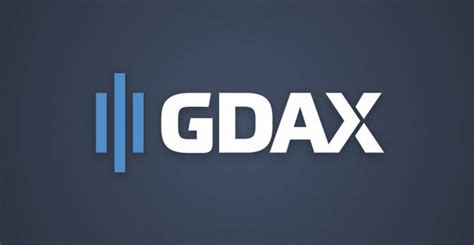Ethereum: Does GDAX charge network transaction fees?
Ethereum: GDAX Fee for a network transaction?
When it comes to the exchange of cryptocurrencies, such as GDAX (formerly known as GDAX Europe), many users have expressed confusion about transaction fees related to withdrawal. In this article, we will look at what is happening behind the scenes and check that the calculated GDAX network transaction fees.
Ethereum Basics of Transaction
Before we dip the fees, we quickly check how Ethereum’s transactions work. If you send ether (ETH), cryptocurrency, Ethereum -based exchange, such as GDAX, two types of transactions appear:
1
Transaction Fee
: This is a low fee compiled by the stock exchange to process the transaction. It is usually paid by ETH.
- Network transaction fee : These are charges related to block diversion and approval processes on the Ethereum network.
GDAX charges: not always a network related
Now we are back to GDAX. If you remove the ETH from the GDAX account with the “Leave” feature, you may wonder why your removal request is not fee. The answer lies in the way as GDAX transactions processed on the Ethereum network.
GDAX uses the Ethereum Virtual Machine (EVM) to make transactions, which means that all EVM transactions are made in blockchain, whether in chains or chains. This is different from traditional stock exchanges, such as binance, which charges a single charge for each transaction, regardless of their type.
Network -related charges compared to chain fees
Why would you not notice any fees if you take Eth back to an external purse? There are two possible reasons:
- Only chain transactions : If your cost request is executed in the circuit (i.e. local transaction without another stock exchange), the fee is paid to the ETH and registered in your transaction paid fund.
- Outside chains with network fees : However, if you move the Eth of GDAX with an external purse or service from a third part of service providers, fees may not be fully reflected in your payment request. This is due to the fact that these services often charge a higher fee for their services than calculated from the GDAX.
What happens if you retire in the external purse?

While GDAX does not seem to increase the network transaction fee when you pull Eth back to the external purse, the reality is more difficult. If you use a service from a third part of service providers to withdraw from your account, it may charge a higher fee than the fee listed in your withdrawal request.
For example, if you use Coinbase for GDAX, it can charge a 1% fee for each transaction, whether it’s a deal on the chain or outside the chain. This means that the fees, even if the GDAX, are not calculated, are deducted from the account balance if they are removed to an external purse.
Diploma
While this may seem controversial, Ethereum’s transactions may actually be related to them, whether open or not chain. If you use a third party service, such as Coinbase to remove from GDAX, you may not notice the fees as this service is difficult, not from the stock exchange itself.
Tips for Reducing Fee
To reduce the cost by raising the Ethereum account, you must consider as follows:
- Use an external purse or service that loads lower fees.
- Be careful with the third -party services and carefully check the charge before you take it out of your account.
3 .. Consider using a more traditional exchange, such as binance for your removal requirements.
If you understand how Ethereum’s transactions work behind the scenes, they are better equipped to move the cryptocurrency exchange in the complex world.

Leave a Reply
Want to join the discussion?Feel free to contribute!